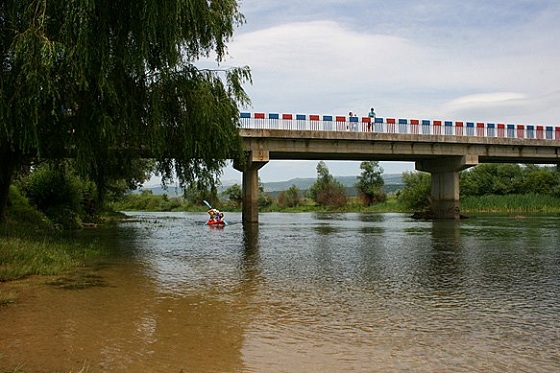One of the many advantages of flying into Split is the sheer wealth of holiday choice which awaits the arriving tourist. While the majority head out to the stunning islands of Hvar, Brac, Vis and Solta, and a large number savour the growing attractions of the Dalmatian capital, some of the real undiscovered treasures of Croatia lie just a short journey inland.
The town of Sinj is one such example. Last year, there were almost 12,000 overnight stays, down from 21,500 before the motorway from Zagreb opened in 2006 (Sinj lies on the old road). A town and surrounding area of 24,000 people (the town itself has 11,448 inhabitants), some distance from the sea. Why bother when there is so much Adriatic magic to enjoy at the beach? Why indeed?
Except...
Except...
Dig a little deeper. Did you know, for example, that there is evidence that football was first played in the Cetinjska Krajina region. Evidence which was put on the front page of the 1969 cover of official Fifa journal, FIFA News (issue 71). As the Sinj Tourist Board explains:
 |
| Photo: Nikola Belančić |
A tombstone of a seven-year-old Roman boy Gaius Laberius holding a ball with hexagons joined in the manner of a net-like ornament. The symbol of a real leather ball, it is considered firm evidence that football in Europe was first played in the Cetinska Krajina Region. It was found in the Tilurium site, in the locality of Gardun, and dates back to the 2nd century.
Today the tombstone is built into the front wall of the Perković family-owned stone building in Vrlička Ulica at number 10 in Sinj. Made of limestone, the monument is 113 centimetres high and 46 centimetres wide. At the bottom there is a two-part inscription, the first part of the inscription being in a well-defined frame and informing about Gaius Laberius, whereas the second part is an inscription by an unkonown author dedicated to the boy.
The central part is a round medallion framed with ornaments, bearing a portrait of the boy who holds the ball in his right hand. At the top of the monument there is a frieze showing a kantharos (a large two-handle vase), a dolphin and the head of Medusa (in ancient mythology, the personification of evil) and a triangular gable with acroteria (plastic ornaments of tops and corners) in the shape of lion’s paws. The head of Atis is sculptured in the triangular gable.
 |
| Photo: Branko Čović |
Even though football was played at Gardun among Roman soldiers and sons of the rich, originally the game was Illyrian and the Delmates had played it long before the Roman troops arrived. This is further proven by the fact that in no locality other than Gardun throughout the historical Roman Empire, a football-related pattern or image has been found.
In 1969, the international football association (FIFA) dedicated a cover of its official journal FIFA NEWS (issue 71), headlined Archaeology and football, to the archaeological discovery of the amateur archaeologist Josip Bepo Britvić. According to the FIFA, this discovery is a piece of information significant for both archaeology and football fans. (Delmates VS Romans match).
So, pretty town with some history, a claim to fame and a couple of traditions? Maybe a little interesting.
Except...
 |
| Photo: Sinj Tourist Board |
There is plenty to do. Sinj is a perfect blend of heritage, tradition and activity sports. Supremely located just 30 minutes from Split and yet a world away from the tourist hordes, Sinj is the perfect place to discover the charm and unique aspects of traditional Dalmatian life, and for outdoor lovers, there is a wealth of choice.
With its own airfield, there are paragliding options.
 |
| Photo: Sinj Tourist Board |
Sinj's hippodrome is world famous, and horse-riding holidays are available in the region, a perfect way to discover the real Dalmatia close up.
 |
| Photo: Ilija Veselica |
The mighty Cetina river has some challenging days out, including white-water rafting and canoeing safaris.
 |
| Photo: Sinj Tourist Board |
Tennis courts, an Olympic-size outdoor swimming pool, fly-fishing, climbing, paintballing, hiking, mountain climbing and Jeep safaris - the list goes on.
 |
| Photo: Nikola Belančić |
All a 30 minute drive from Split. The home of football. For an inexpensive activity or outdoor holiday in inland Dalmatia's unspoilt nature, yet within a short drive of the amenities of the city and the beach, Sinj is surely one of the last quality undiscovered destinations in Europe.
And the food. We have not yet mentioned the food. Next time, or for more information, visit the Sinj Tourist Board online.









